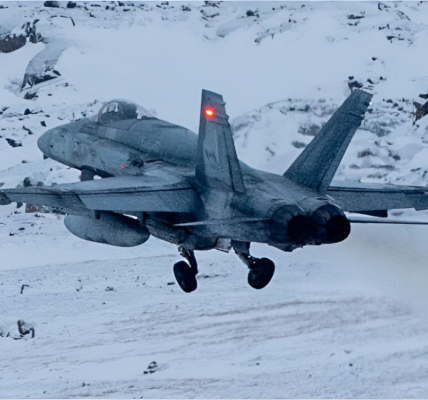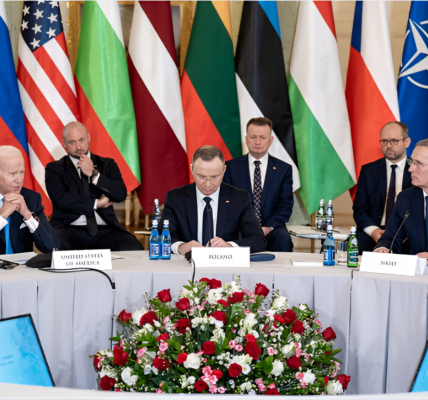France’s Push to Restrict Iran’s Missile Program: A Critical Step for Preserving Balance in the Middle East

French President Emmanuel Macron has recently called for Iran to engage in negotiations to curb or even terminate its missile program, threatening sanctions against the nation if it refuses to comply. This move echoes the stance of other Western powers, including the United States, which have steadily increased sanctions on Iran, using its missile development as a pretext. While Iran previously agreed to limit its nuclear program under the 2015 nuclear deal and allowed Western monitoring of its facilities, it remains resolute in its refusal to compromise on its missile capabilities.
The Iranian Foreign Ministry has firmly rejected such demands, stating, “France is fully aware of our country’s firm position that Iran’s defense affairs are not negotiable.” Tehran has also accused Western nations of attempting to alter the nuclear agreement by adding new conditions post hoc. “We have told French officials repeatedly that the nuclear deal is not negotiable, and other issues will not be allowed to be added to it,” Iranian officials have asserted.
Balancing Power in the Middle East
At the heart of this dispute lies the broader geopolitical struggle for influence in the Persian Gulf. Western-aligned Arab Gulf states, particularly Saudi Arabia and the United Arab Emirates (UAE), enjoy an overwhelming advantage in military spending and advanced weaponry. According to the Center for Strategic and International Studies, Saudi Arabia and the UAE collectively spend over $100 billion annually on defense, dwarfing Iran’s modest $9 billion budget. This disparity is further underscored by the Gulf states’ advanced air fleets, which include cutting-edge U.S.-built fighters like the F-15SA and F-16E. Iran, in contrast, fields an aging air force with a small number of operational F-14 fighters and outdated jets like the Vietnam War-era F-4 and F-5, supplemented by limited domestically produced models.
Given this imbalance, Iran has turned to asymmetric warfare capabilities to counter its rivals. Central to this strategy is its missile program, which has drawn heavily on North Korean technology acquired through close military cooperation between the two nations. Ballistic missiles, surface-to-air systems, and anti-ship weapons allow Iran to offset the Gulf states’ conventional military superiority. These systems are not only effective but also cost-efficient. For example, a $100 million F-15SA fighter is vulnerable to a $1 million surface-to-air missile, while cruise missiles costing under $1 million each can threaten warships worth hundreds of millions. Furthermore, Iran’s ability to target key cities in Saudi Arabia and the UAE serves as a potent deterrent, with even a small number of missile strikes capable of causing devastating economic and psychological damage.
Western Strategy and the Push for Restrictions
Iran’s missile program, in the absence of weapons of mass destruction, is its primary tool for maintaining a strategic balance with its better-funded and better-armed adversaries. For the West, preventing Iran from achieving even conventional parity with Gulf states and Israel is critical to maintaining its influence in the region. By stifling Iran’s missile development, Western powers aim to ensure their allies’ military dominance and regional stability on terms favorable to their interests.
France’s recent calls for negotiations and threats of sanctions align with this broader Western objective. Macron’s stance mirrors the U.S. strategy of applying maximum pressure on Iran, despite missile development being a sovereign right under international law, as guaranteed by the UN Charter. For Western nations, however, the legalities take a backseat to the strategic imperative of curbing Iran’s power.
A Broader Context of Western Dominance
The efforts to restrict Iran’s missile program are part of a long-standing Western approach to global and regional dominance. During the Cold War and beyond, the Western bloc has consistently sought to prevent parity with rival states, favoring policies that preserve its supremacy. In the Middle East, this has translated into supporting client states like Saudi Arabia, the UAE, and Israel, while seeking to weaken or disarm adversaries such as Iran.
For Iran, surrendering its missile program would leave it highly vulnerable to military aggression from its Gulf neighbors and Israel. The missile program not only provides Tehran with a means of deterrence but also ensures its survival in a region where its adversaries outmatch it in conventional military strength. This asymmetry explains Iran’s steadfast refusal to negotiate on the issue, despite mounting Western pressure.
Conclusion
As France and other Western nations ramp up their efforts to curtail Iran’s missile capabilities, the stakes remain high for all parties involved. For the West, maintaining a favorable balance of power in the Persian Gulf is critical to its broader strategic interests. For Iran, its missile program is not merely a matter of national defense but a crucial tool for ensuring its sovereignty and deterring aggression. This geopolitical tug-of-war is unlikely to abate anytime soon, as both sides remain entrenched in their positions, each seeking to secure its place in a volatile and strategically vital region.




